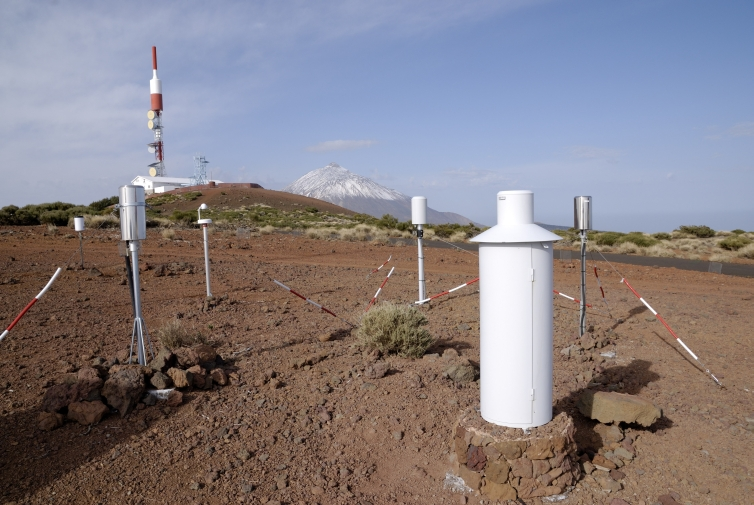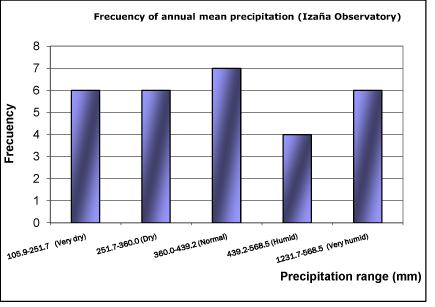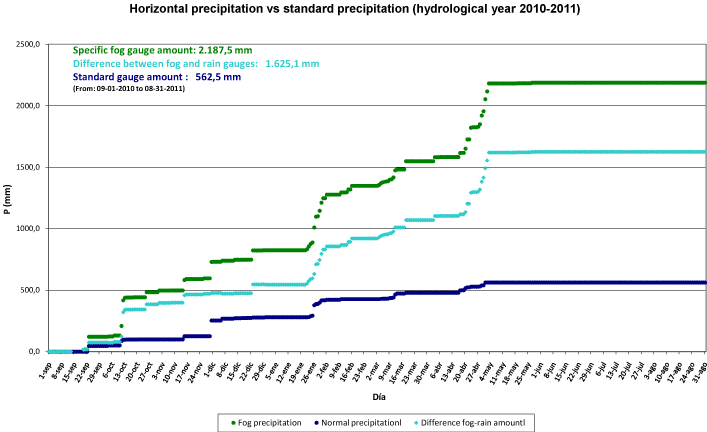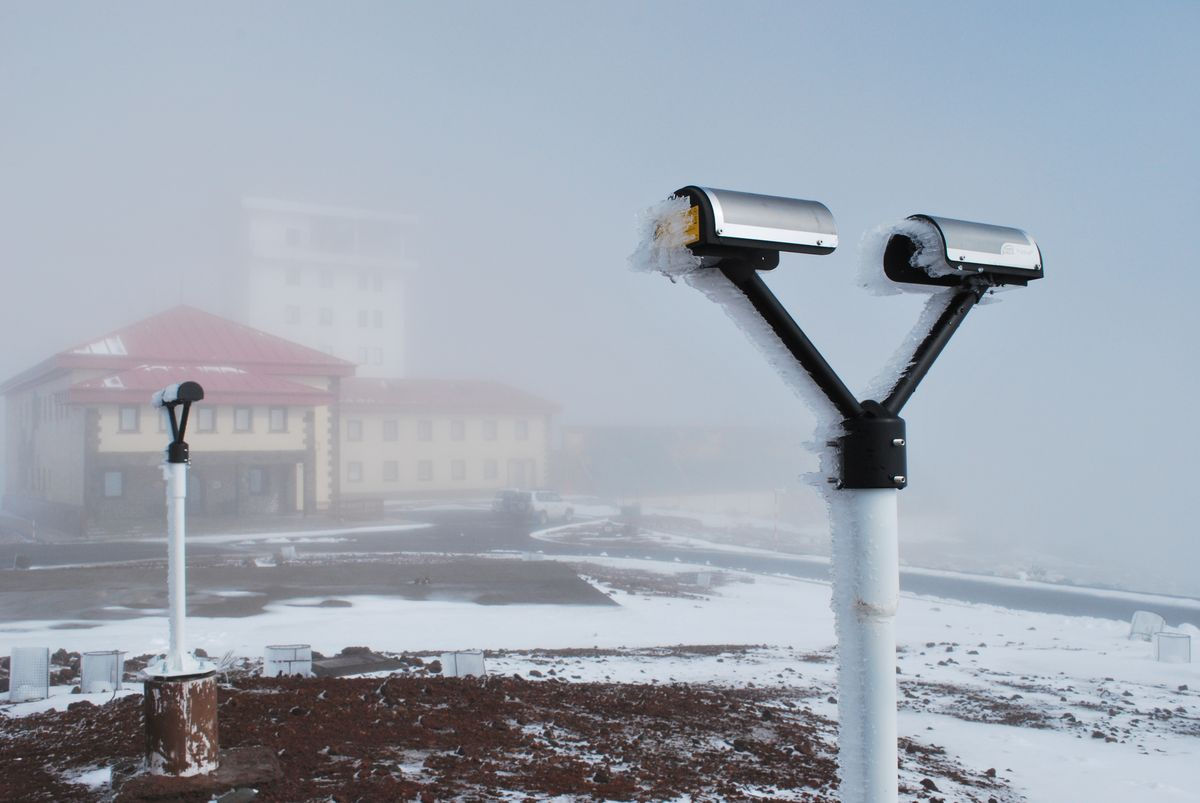Precipitation at Izaña for the hydrological year 2010-2011

The ‘Hydrological Year’ is the period from September 1 to August 31 of the next year (in the Northern Hemisphere). The last hydrological year 2010-2011 can be considered as a humid year (it is one of the 40% rainiest years), according to records from rain gauges installed at the Izaña Atmospheric Observatory. A total of 562.5 mm have been collected, amount significantly higher than the 441.1 mm of annual average for the period 1971-2000. A total of 58 days with significant rainfall have been recorded, what represents an increase of 35% respect to 43.4 days on average in the period 1971-2000.

Figure 1: Absolute frequency of annual mean precipitation for five classes within the period 1971-2000 at the Izaña Atmospheric Observatory. Bars show the frequency of years with precipitation collected within the indicated ranges (very dry, dry, normal, humid, and very humid). The precipitation value of the hydrometeorological year 2010-2011 is 562.5 mm, and therefore is in the range of humid years. In this graphic it can also be observed that total annual rainfall at Izaña is highly variable, existing the same frequency of very dry years than humid years.
Another type of precipitation recorded at Izaña is that caused by fog. Thus specific gauges are available with a special designed device that mimics the capture of fog droplets by vegetation (for more information read the news of 2010 here). These special gauges were installed in September 2009. In the last hydrometeorological year 2,187.5 mm were collected, almost four times more precipitation than that recorded in the same period by normal rain gauges. So, we obtain a difference between fog and standard rain gauge of 1,625.1 mm. However, for an accurate determination of the volume corresponding to precipitation from fog (also known as “occult precipitation” or “horizontal precipitation“) some corrections are necessary which are out the goal of this informative report. Any way, it can be seen clearly the great importance of this type of occult precipitation.

Figure 2: Evolution of the precipitation recorded by fog and normal gauges, and the difference between them (hydrometeorological year 2010-2011).
Given the importance of this phenomenon, the Izaña Atmospheric Observatory has implemented a long-term monitoring of this type of precipitation. To achieve this goal two new automatic rain gauges, one for normal rainfall collection, and another with the device for capturing water from fog were installed at Izaña as part of the meteorology program. Recently, four disdrometers (laser optical systems) have been also implemented to measure the speed and the diameter of precipitating particles, being able to differentiate the type of precipitation (rain, snow, drizzle, fog). So, the type of precipitation and its main features are real time monitored. This new observation program will permit to know more accurately the actual total amount of fog-derived water received by plants and the ground.

Figure 3: Image of the two disdrometers (with perpendicular laser axis) installed at the Izaña Atmospheric Observatory last winter for scientific purposes. Two new disdrometers have been installed in summer 2011 as part of the operational synoptic station. (Photo: Conchy Bayo).







